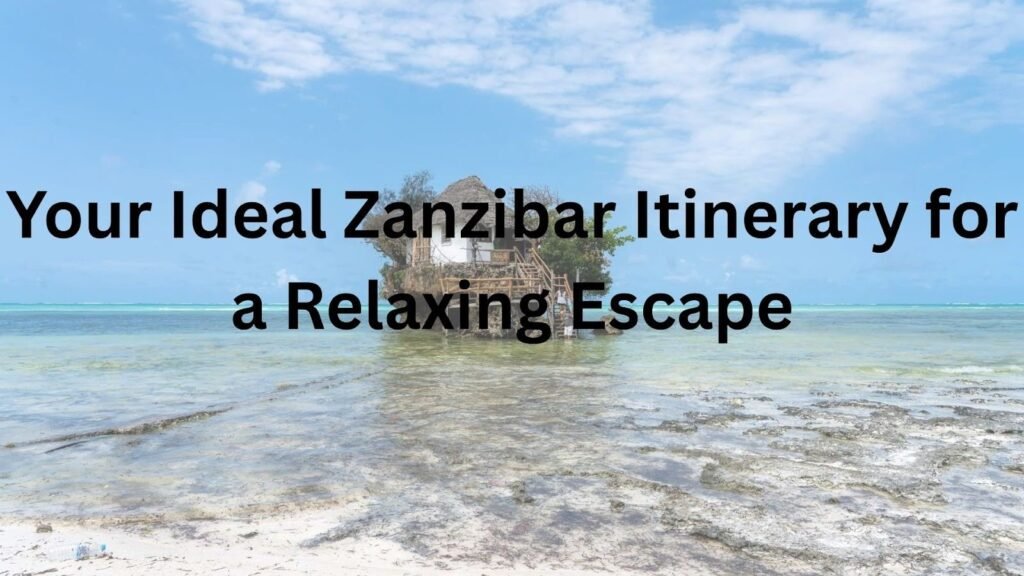I still remember my first morning in Zanzibar, watching the ocean pull back hundreds of meters during low tide. Local fishermen walked out to collect octopus while kids played on the exposed coral. It was unlike anything I had seen before.
Zanzibar sits off Tanzania’s coast in the Indian Ocean. This island group boasts white sand beaches, crystal-clear turquoise waters, and a rich blend of African, Arab, and Indian cultures. Many travelers visit after a safari on the mainland, but Zanzibar works perfectly as its own trip too.
This guide gives you a complete Zanzibar itinerary with specific activities, where to stay, and practical advice. You’ll learn about the best beaches, cultural sites, and ocean activities that make this island special.
The Perfect Zanzibar Itinerary at a Glance
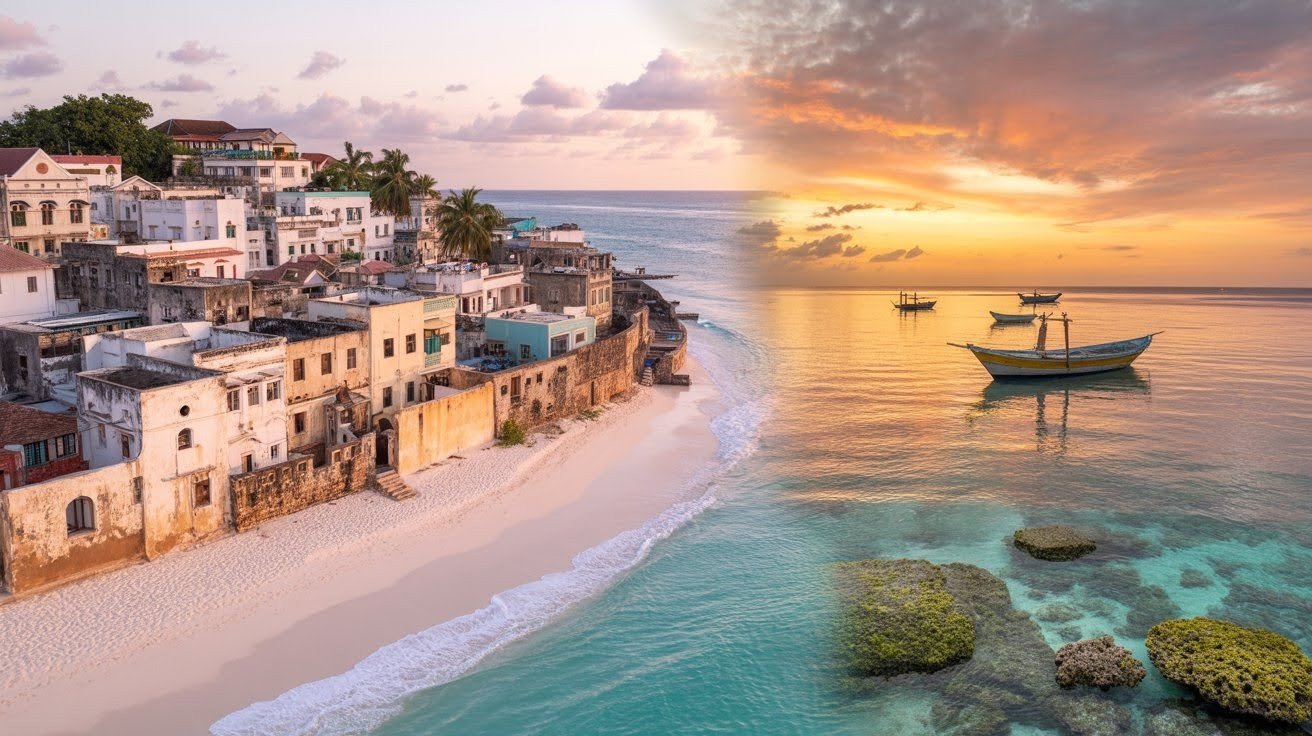
Your first two days should focus on Stone Town, the historic capital. Walk through narrow streets, visit old buildings that tell stories of the spice trade, and try local food at night markets. This area gives you a strong sense of Zanzibar’s past and present culture.
Days three through five belong on the East Coast in areas like Paje, Matemwe, or Kiwengwa. Here you’ll find long stretches of beach, water sports, and nearby spice farms. The beaches on this side offer calm conditions for swimming and kitesurfing. You can also visit local villages and see how people live.
Finish your Zanzibar itinerary on the North Coast at Nungwi or Kendwa for days six and seven. These beaches have the best sunsets and stay deep enough for swimming even at high tide. Book a sunset cruise on a traditional dhow boat or go snorkeling at nearby reefs.
Quick Reference Guide:
| Area | Best Hotels | Top Activities | How Long |
| Stone Town | Emerson Spice, Zanzibar Serena | Walking tours, markets, and museums | 2 days |
| East Coast | Paje by Night, Matemwe Lodge | Kitesurfing, spice tours, beach time | 3 days |
| North Coast | Z Hotel, Kendwa Rocks | Snorkeling, dhow cruises, diving | 2 days |
Best Places to Visit in Zanzibar
Each part of Zanzibar offers something different. Some areas focus on history and culture, while others highlight beach life and water activities.
Stone Town: Historic Heart of Zanzibar

Stone Town earned UNESCO World Heritage Site status for good reason. Buildings here show influences from Arab traders, Persian merchants, Indian businessmen, and European colonizers. The architecture mixes all these styles into something completely unique to Zanzibar.
Book a guided walking tour through the maze of narrow alleys. Your guide will show you carved wooden doors, explain the buildings’ history, and take you to sites from the slave trade era. These tours help you understand the island’s complex past. For accommodation, choose one of the boutique hotels in restored historic buildings.
Prison Island Giant Tortoises
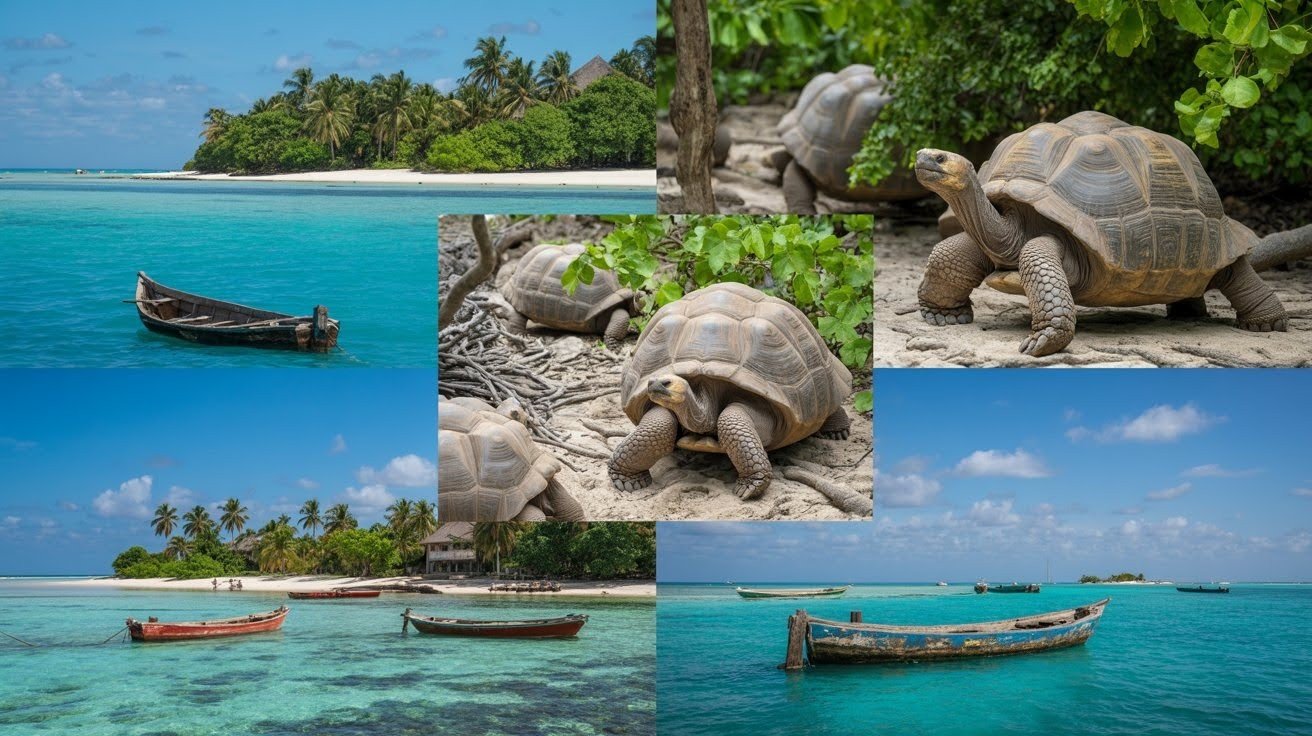
A 30-minute boat ride from Stone Town takes you to Prison Island. Giant Aldabra tortoises live here, some over 100 years old. You can walk among these gentle creatures and learn about conservation efforts to protect them.
The island got its name from a prison that was planned but never used. Today, it serves as a sanctuary for these amazing animals. Most tours include stops at a sandbank for photos and snorkeling spots nearby. You can book reliable tours through GetYourGuide before you arrive.
Spice Plantation Tours

People call Zanzibar the “Spice Island” because cloves, cinnamon, vanilla, and nutmeg grow here in large amounts. Tours take you through working plantations where guides show you plants and let you smell and taste fresh spices. You’ll see how cloves grow on trees and how vanilla vines climb up posts.
Many tours include cooking classes where you learn to use these spices in traditional dishes. Local cooks teach you recipes passed down through generations. These tours work well when you’re traveling from Stone Town to the east coast beaches, as most farms sit along that route.
Jozani Forest Reserve
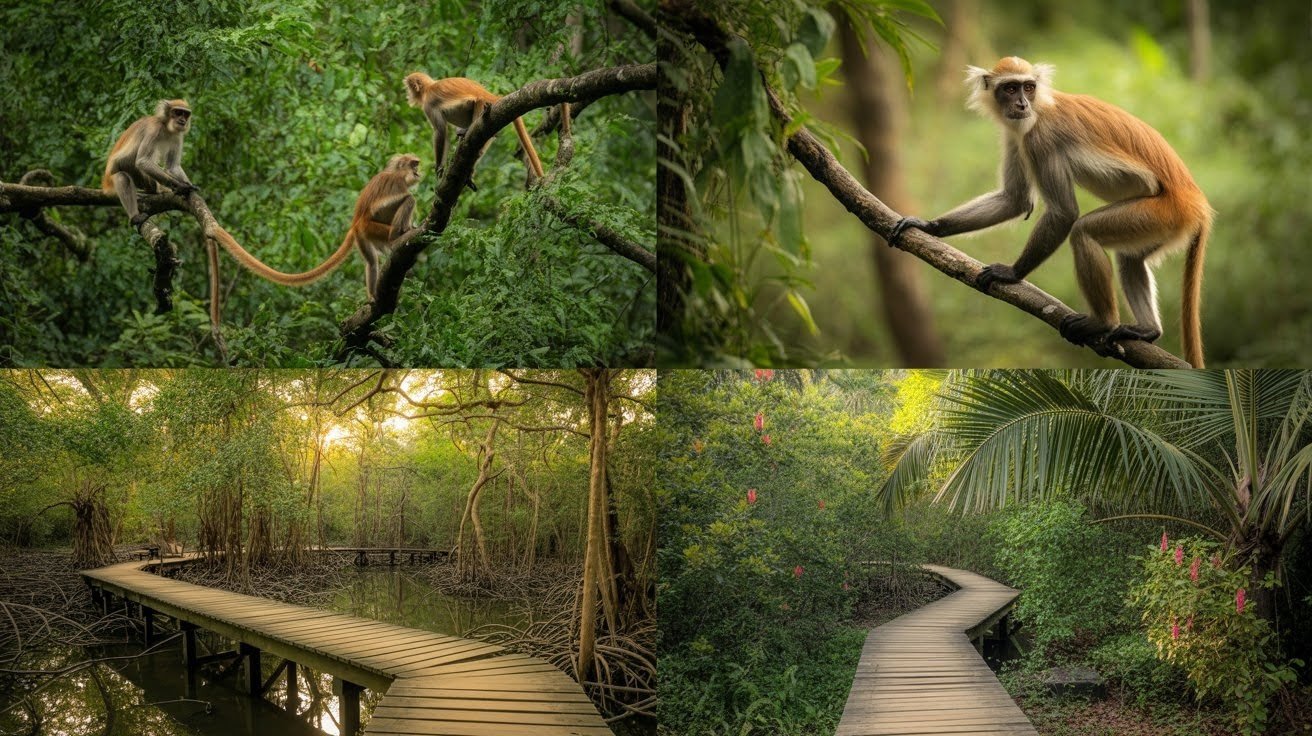
This forest in the southeast protects the last natural woodland left on the island. The main attraction is the endangered Zanzibar red colobus monkey, found nowhere else on Earth. These monkeys have reddish backs and long tails, and they’re surprisingly comfortable around visitors.
Marked trails lead you through the forest with local guides who point out medicinal plants and explain the ecosystem. The reserve includes mangrove boardwalks where you can see specialized trees growing in saltwater. Getting here from Stone Town or the beaches takes about an hour by car.
Paje Beach: Kitesurfing Paradise
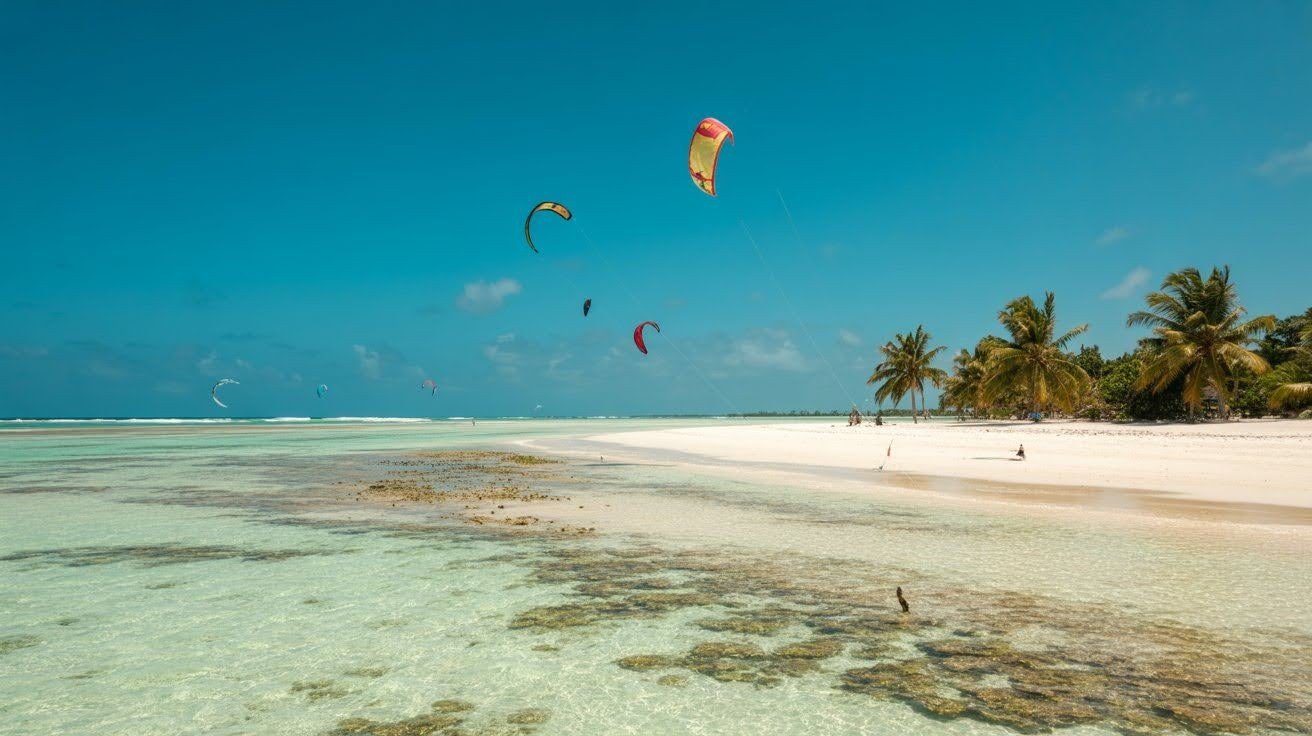
Paje sits on the southeast coast and attracts kitesurfers from around the world. The shallow lagoon and steady wind create perfect conditions for learning and practicing. Even if you don’t kitesurf, the beach offers stunning views of colorful kites filling the sky.
The village has a relaxed, friendly feel, popular with backpackers and budget travelers. Local people live right near the beach, so you get a real sense of daily life. Several shops rent equipment and offer lessons for beginners. When the tide goes out, you can walk far onto the exposed sand and coral.
Nungwi Beach: Vibrant Northern Shore
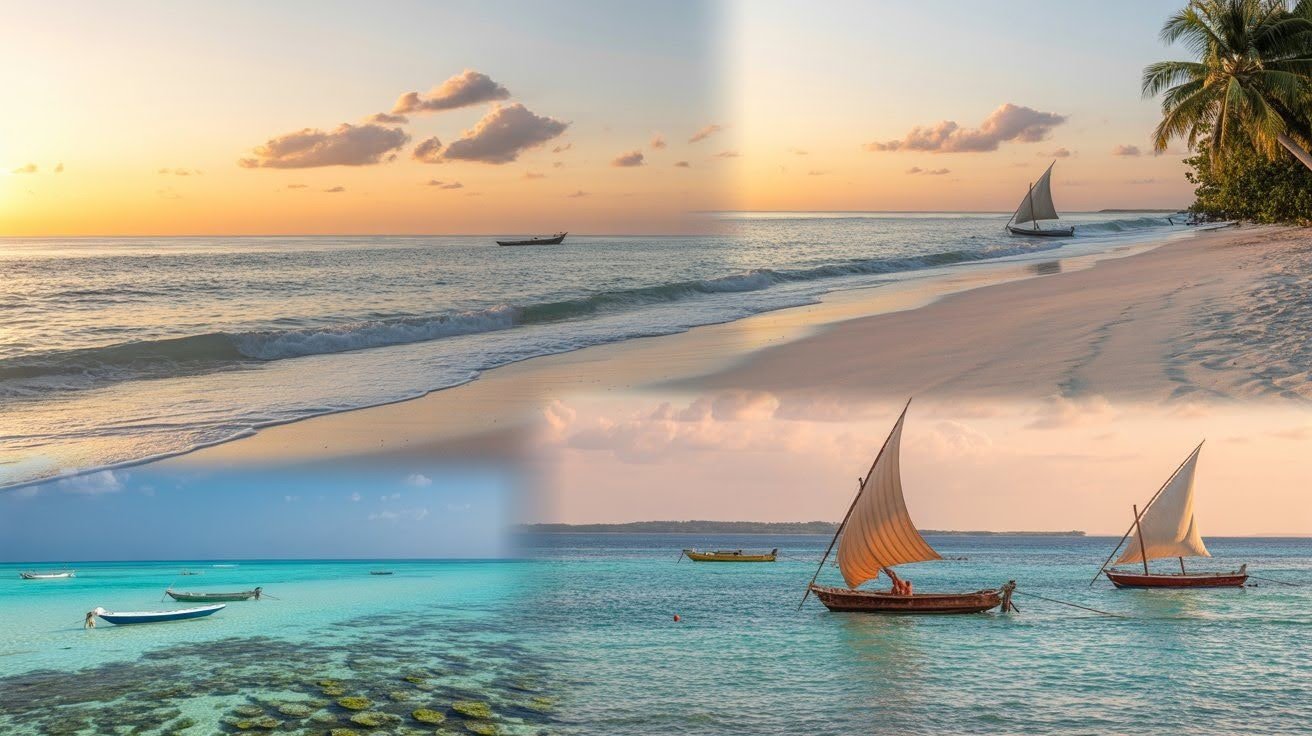
Nungwi offers some of Zanzibar’s best beach experiences. The northern location means the beach stays deep enough for swimming all day, unlike areas where low tide exposes the seafloor. This makes it ideal for people who want to swim whenever they choose.
You’ll find top hotels, restaurants, and nightlife here. The area gets lively at night with beach bars and music. Sunsets from Nungwi rank among the most beautiful in Zanzibar. The nearby reefs offer excellent scuba diving and snorkeling, with clear water and abundant marine life.
Traditional Dhow Sunset Cruise

Traditional dhow boats have carried goods across the Indian Ocean for centuries. These wooden sailing vessels with triangular sails now offer peaceful sunset cruises. The experience feels timeless as you glide across calm water with only wind power.
Most beaches have operators offering dhow trips in the late afternoon. The boats leave before sunset and return after dark. It’s a romantic activity and creates great photos. Some cruises include drinks and snacks. The gentle rocking of the boat and the warm breeze make this a highlight of many trips.
Essential Tips for Your Zanzibar Trip
Planning helps you make the most of your time on the island. These practical tips cover timing, transportation, and accommodation choices.
How Long to Spend in Zanzibar
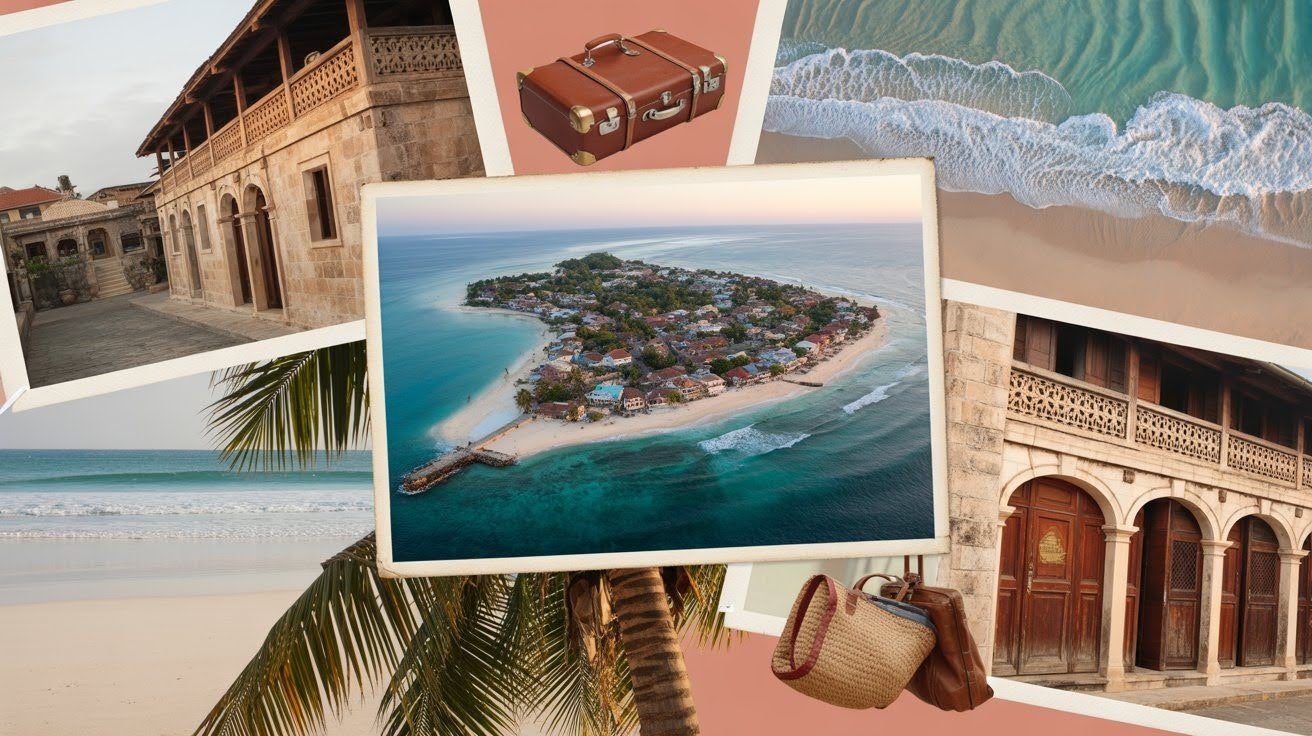
Three to five days works well if you just want beach time and basic sightseeing. This gives you enough time to visit Stone Town and spend several days at one beach location. You’ll feel relaxed but might miss some activities.
Seven to ten days lets you see more of the island and try different beaches. This length fits well with a complete Zanzibar itinerary that includes culture, nature, and beach time. After a safari on the mainland, most people spend five to seven days here to unwind.
Best Time to Visit

The dry season runs from June through October and again from December through March. These months bring sunny days, less humidity, and calm seas. Water visibility improves for snorkeling and diving. Hotels and tours get busier, especially around holidays.
April and May bring the rainy season with daily afternoon showers. Prices drop significantly, and crowds thin out. If you don’t mind occasional rain, this can be a good time to visit. July stands out as the best single month, with perfect weather and easy connections if you’re combining your trip with a safari.
Getting Around the Island
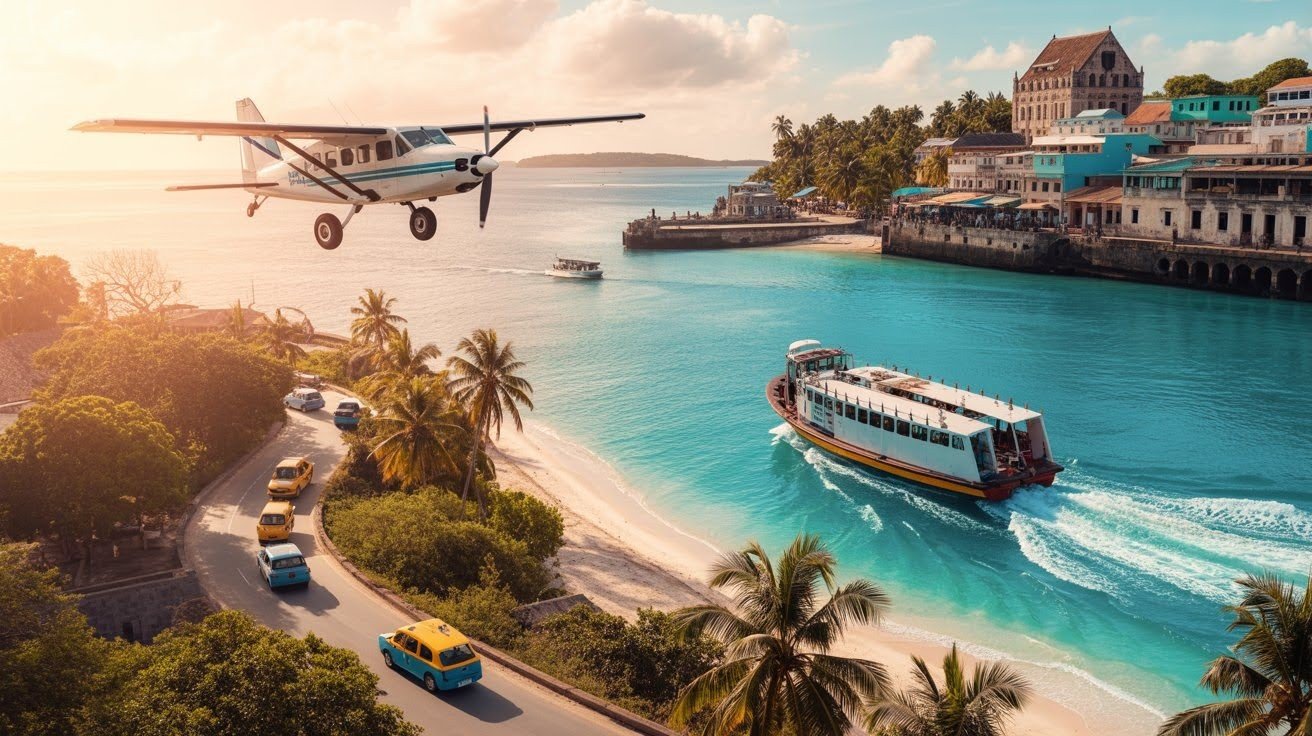
Domestic flights connect Zanzibar to Dar es Salaam and Arusha several times daily. The flight from Dar takes just 20 minutes. Ferries also run between Dar es Salaam and Stone Town, taking about two hours. Book ferry tickets in advance during busy seasons.
Once on the island, you’ll need transportation between areas. Taxis and private transfers work well for moving between Stone Town and beach areas. Many hotels arrange airport pickup. For tours and activities, booking online before arrival often costs less than booking locally.
Where to Stay by Area
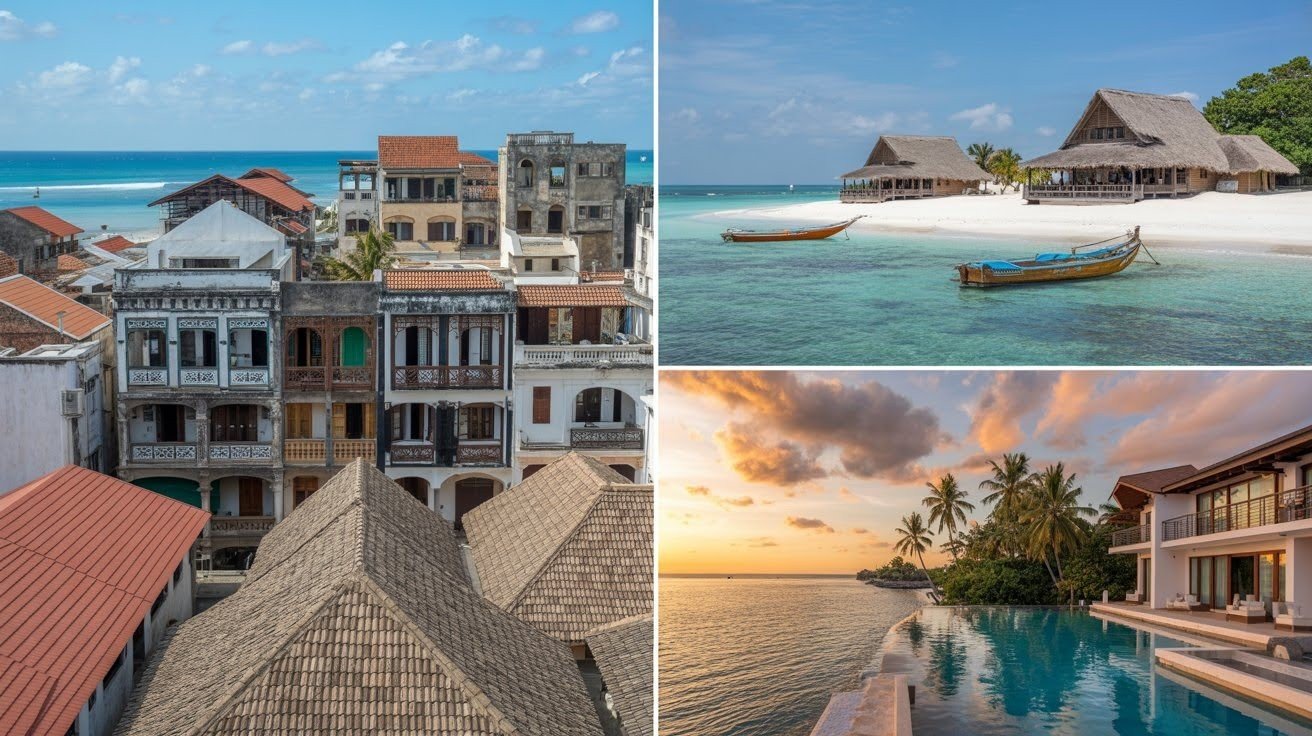
Stone Town hotels sit in restored historic buildings with character and charm. Rooftop terraces offer views over the old town’s maze of buildings. These hotels put you in the center of the cultural experience.
Paje provides budget to midrange options right on the beach. Small guesthouses and backpacker lodges line the shore. The East Coast overall has more secluded boutique resorts if you want privacy. Nungwi and Kendwa feature both luxury resorts and party-friendly accommodations. Choose based on whether you want quiet relaxation or a social atmosphere.
Conclusion
Zanzibar combines cultural richness with tropical beach beauty in ways few places match. The island works perfectly after a safari, giving you time to relax and process your wildlife experiences. But it also stands strong as its own trip, with enough variety to fill a week or more.
A seven-to ten-day Zanzibar itinerary gives you time to experience different parts of the island. You’ll understand the history in Stone Town, feel the local culture, and enjoy several beach areas. Each coast offers different benefits, from kitesurfing to pristine swimming beaches.
Book your accommodations early, especially during dry season months. Popular boutique hotels and beachfront properties fill up quickly. Whether this is your first visit or a return trip, those white sand beaches and clear turquoise waters create memories that last long after you leave.
Frequently Asked Questions
What Should I Pack for Zanzibar?
Bring modest clothing for Stone Town visits, as it’s a Muslim community. Pack reef-safe sunscreen to protect coral, mosquito repellent for evenings, and beachwear for the beaches. Light, breathable clothes work best in the tropical climate.
Is Zanzibar Safe for Solo Travelers?
Zanzibar is generally safe with friendly local people. Use common sense like you would anywhere: don’t walk alone late at night, watch your belongings in crowded areas, and respect local customs. Most solo travelers have positive experiences.
Can You Drink Alcohol in Zanzibar?
Zanzibar is a Muslim island, but alcohol is available at hotels, restaurants, and bars in tourist areas. It’s not sold in local shops in Stone Town. Drink respectfully and avoid drinking in public spaces outside of tourist zones.
What Currency Is Used in Zanzibar?
The Tanzanian shilling is the official currency, but US dollars are widely accepted. ATMs in Stone Town and major beach areas dispense local currency. Many hotels and tour operators accept credit cards, though small businesses prefer cash.
Do I Need a Visa for Zanzibar?
Most visitors need a visa for Tanzania, which covers Zanzibar. You can get it on arrival at the airport or apply online beforehand. Check current requirements for your country. Some nations require proof of yellow fever vaccination if arriving from certain countries.

